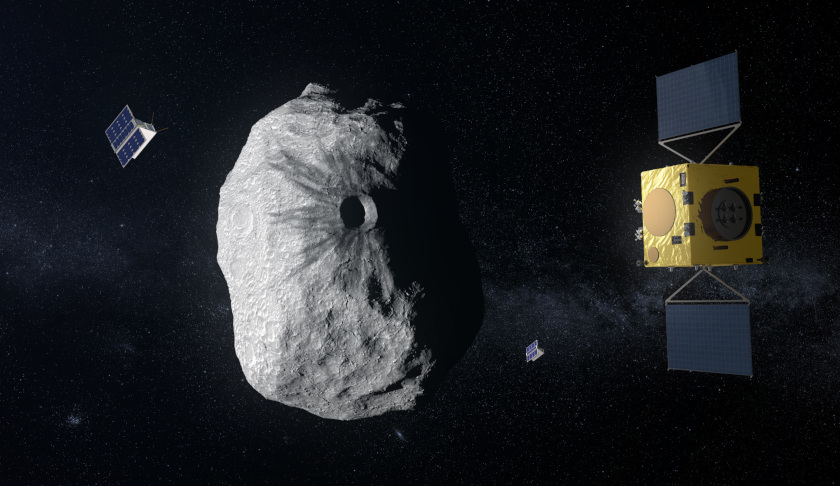
This combined mission is known as the Asteroid Impact Deflection Assessment, or AIDA for short. Its purpose is to deflect the orbit of the smaller body of the double Didymos asteroids between Earth and Mars through an impact by one spacecraft. Then a second spacecraft will survey the crash site and gather the maximum possible data on the effect of this collision.
The three-day International AIDA Workshop will take place on 11-13 September in the historic surroundings of the ‘Aula Ottagona’ in central Rome, part of the Baths of Emperor Diocletian that went on to serve as a planetarium in the last century.
Participants will share the current progress of the two spacecraft making up AIDA – including the smaller nano-spacecraft they will carry aboard them – as well the latest results of global astronomical campaigns undertaken to learn more about the distant Didymos asteroids.
NASA’s contribution to AIDA, the Double Asteroid Impact Test, or DART spacecraft, is already under construction for launch in summer 2021, to collide with its target at 6.6 km/s in September 2022.
Flying along with DART will be an Italian-made miniature CubeSat called LICIACube (Light Italian CubeSat for Imaging of Asteroids) to record the moment of impact.
Ian Carnelli, managing Hera for ESA, said, "DART can perform its mission without Hera – the effect of its impact on the asteroid’s orbit will be measurable using Earth ground-based observatories alone."
Hera is currently undergoing final phase B2 design work, ahead of a decision to proceed by Europe’s space ministers at the Space19+ Ministerial Conference this November, as part of the proposed new ESA Space Safety Programme. Launch will occur in October 2024 and the journey will take about two years.
"But flying the two missions together will greatly magnify their overall knowledge return. Hera will in fact gather essential data to turn this one-off experiment into an asteroid deflection technique applicable to other asteroids. Hera will also be the first mission to rendezvous with a binary asteroid system, a mysterious class of object believed to make up around 15 per cent of all known asteroids," Carnelli said.
A near-Earth asteroid system, Didymos’ main body measures about 780 metres across, with its moonlet about 160 metres in diameter, about the size of Egypt’s Great Pyramid. It was selected carefully as a deflection target.
"I also believe it is vital that Europe plays a leading role in AIDA, an innovative mission originally developed through ESA research back in 2003. An international effort is the appropriate way forward – planetary defence is in everyone’s interest," Carnelli added.
Due to the relatively small mass and gravities of these bodies, the smaller asteroid orbits its parent at a comparatively low velocity of a few centimetres per second, making it feasible to shift its orbit in a measurable way – something which would not be achievable so precisely with a lone asteroid in a much more rapidly moving solar orbit.
Receive the latest developments and updates on Australia’s space industry direct to your inbox. Subscribe today to Space Connect here.









